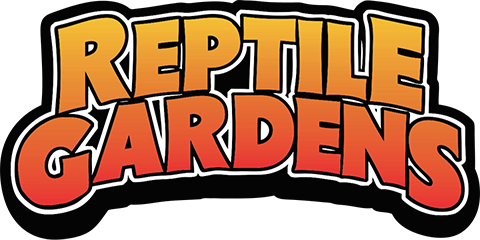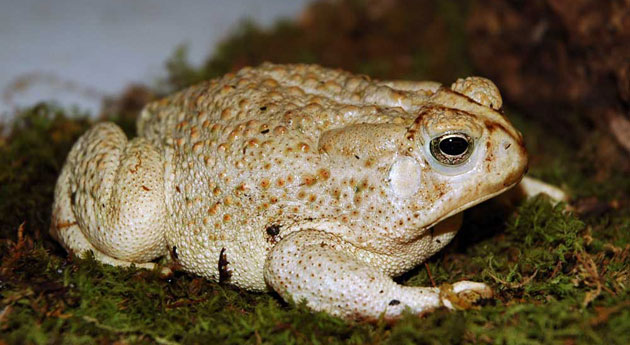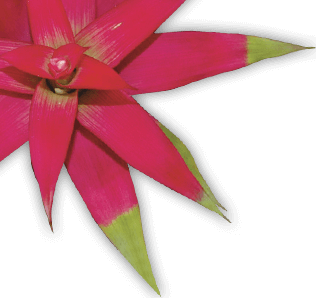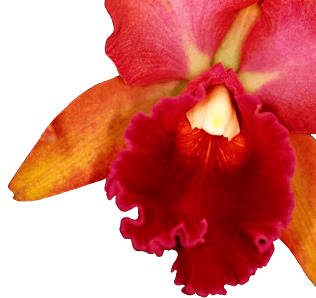Salamanders

Tiger Salamander
(Ambystoma tigrinum) The tiger salamander is the only salamander species found in South Dakota. Tiger salamanders are terrestrial 4-legged, tailed amphibians, and are usually found in water or in moist areas on land. Adult tiger salamanders have a broad head, long sticky tongue, and their mouth looks like a smile. The adult normal body length for a tiger salamander is 6 to 8 inches (15 - 20 cm) with a record length of 13 inches (33 cm). The salamander's black or brownish body is covered with olive or yellow bars, blotches, or spots.
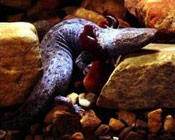
Mudpuppy
(Necturus maculosus) Mudpuppies are aquatic salamanders and reside in permanent bodies of water. In contrast to more familiar amphibians such as frogs, Mudpuppies never lose their gills during maturation from the tadpole into the adult stage, as they spend their entire lives under water. Mudpuppies also absorb oxygen through their skin and occasionally breathe air at the surface.
Mudpuppies are a rare type of salamander found in the very northeast corner of South Dakota. What people in the rest of the state refer to as Mudpuppies or Waterdogs are actually neonate Tiger Salamanders before they metamorphose into adults.
Frogs & Toads
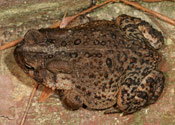
American Toad
(Bufo americanus) Extreme eastern South Dakota is the western limit of the habitat range for the American Toad, and they are only found in the far eastern counties of this state. American Toads are usually a dull brown, but can range from yellowish to olive brown to dark gray with patches of lighter colors. Their skin contains many glands that produce a mild poison to protect toads from predators.
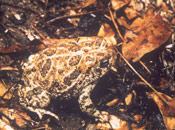
Great Plains Toad
(Bufo cognatus) Found throughout South Dakota, the Great Plains toad is gray, brown, and green in color, with darker colored blotching. It can grow to 4.5 inches in length and is nocturnal. They prefer grassland habitat, with loose soil that is easy to burrow in.
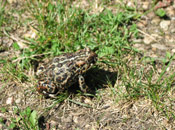
Canadian Toad
(Bufo hemiophrys) The average size for the Canadian Toad is 3 inches in length. It is found only in extreme northeastern SD and is very similar in appearance to the American toad; however, Canadian Toads are white or light brown with dark spots scattered randomly about the back. The cranial boss or "bump" located between the eyes also distinguishes the Canadian Toad from the American Toad.

Woodhouse's Toad
(Bufo woodhousii) Adults have dry skin with small warts, and are gray, brown, or olive green with paler mottling or spots. A prominent white or yellowish line runs down the center of the back. Adult body length is 2.5 to 5 inches. These toads can be found throughout South Dakota.
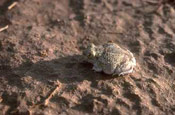
Plains Spadefoot Toad
(Scaphiopus bombifrons) Plains Spadefoot Toads are round, with short legs and protruding eyes. As suggested by their name, this frog has hard, keratinous protrusion present on their feet, which helps them to dig. Like most burrowing frogs, they dig backwards into the ground. For the most part, they can be found in western SD, but also all along the Missouri River to the Iowa border.
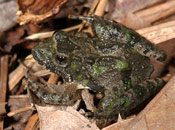
Northern Cricket Frog
(Acris crepitans) The Northern Cricket Frog is one of South Dakota's smallest vertebrates. Found only in the extreme southeast corner of SD, adults average only 1 inch (2.5 cm) in length. This frog is aquatic, and although it belongs to the tree-frog family, it does not climb very often. It is, however, among the most agile of leapers and can jump surprisingly long distances (5-6 feet) for its small size.
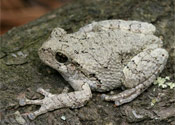
Cope's Gray Tree Frog
(Hyla chrysoscelis) Cope's Gray Tree Frog has orange patches on the concealed portion of its legs. The overall color of this frog can also change from green or brown to almost white, depending upon changes in temperature and activity. The Gray Tree Frogs (Cope's and regular Gray) are found only in the extreme northeast and extreme southeast corners of SD.
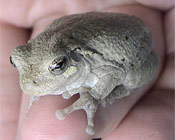
Gray Treefrog
(Hyla versicolor) Gray Treefrogs are, as their common name implies, gray in color. Their skin has a lumpy texture to it, giving them a warty appearance. They are virtually indistinguishable from the Cope's Gray Tree Frog, the only readily noticeable difference being their call. Also like the Cope's Gray, they are found only in the extreme northeast and extreme southeast corners of SD.
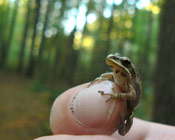
Western Chorus Frog
(Pseudacris triseriata) Western Chorus Frogs are small (1.5 inch or about 40mm), gray or brown frogs with darker brown or gray blotches which extend down the body into almost full stripes. They have small toe pads to help climb small grasses, although they are mostly a ground dwelling species. They can be found in the lower half the state (drawing an imaginary line from the NE corner to the SW corner).
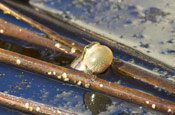
Boreal Chorus Frog
(Pseudacris maculata) Found throughout SD, Boreal Chorus Frogs are the smallest frogs, with a body length of less than 4 centimeters. Their long, straight toes have small, indistinct toe pads, and the webbing is only along the base of the toe. These frogs may be almost any color, including gray, tan, brown, red, olive, or green.
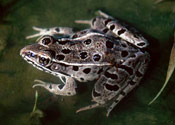
Plains Leopard Frog
(Rana blairi) The Plains Leopard Frog name originates from the distinctive irregular, dark colored spotting on their back. They have long, powerful legs and are capable of leaping great distances. Found only in the extreme Southeastern corner of the state, they are almost always found in or very near permanent water sources, such as streams, creeks, and ponds. They are also nocturnal and shy.

Bullfrog
(Rana catesbeiana) The bullfrog is the largest frog in North America, growing to a length of 3.5 - 5 inches. They use their skin, buccal cavity, and lungs for respiration and are aptly named since their call is a loud, guttural bellow that carries a long distance, giving the impression that the frog is much larger than it actually is, which helps to keep predators away. In SD, they are found along the southern border of the state.
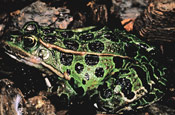
Northern Leopard Frog
(Rana pipiens) The Northern Leopard Frog was once the most abundant and widespread frog species in North America. In South Dakota, they can be found throughout the state, but are much rarer today than in the past. They are slender greenish to brownish frogs with dark spots edged with a lighter color. These frogs have a light stripe along their upper jaw. Northern Leopard Frogs tend to grow a little over 3 inches in length.
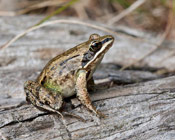
Wood Frog
(Rana sylvatica) Wood Frogs are native to the Nearctic region - farther north than any other North American reptile or amphibian, and are the only frogs found north of the Arctic Circle. They are found through the northeastern United States, and all the way across Canada into Alaska; in SD they are found only in the (really, really, really) extreme northeast corner of the state.
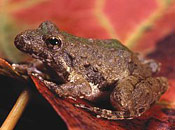
Blanchard's Cricket Frog
(Acris crepitans blanchardi) The Blanchard's cricket frog is tiny, only 7/8 to 1 1/4 inch in length. It's a non-climbing member of the tree frog family, and lives in ponds and streams of the Southeastern corner of SD. The frog is named for the biologist who first described it, Frank Nelson Blanchard, and for its distinctive cricket-like call.
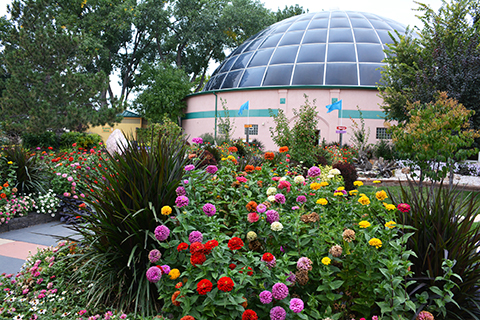
Housing one of the largest collection of reptiles in the world, Reptile Gardens is fun for the whole family. Be sure to take a tour of our Sky Dome and you might just catch a glimpse of our free-roaming frogs, turtles, birds, or friendly snakes. Head toward the lower levels to see our unique collection of amphibians, crocodilians, bugs and, of course, Maniac.
